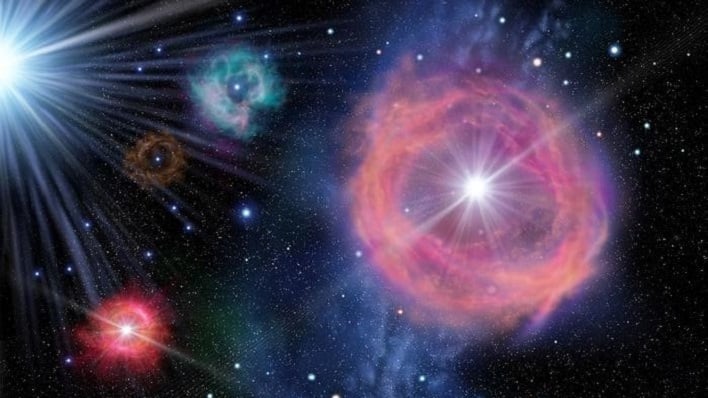A Chemically Peculiar Star May Unlock Cosmic Dawn's Greatest Unsolved Mystery

Numerical simulations of the formation of the very first stars project their mass to have been up to several hundred solar masses. Those with masses between 140 and 260 solar masses ended up as PISNe, and very different from ordinary supernovas. Until now, no chemical signature had ever been found to support the theory that the earliest supernovas in the history of the universe left a unique chemical signature in the atmosphere of the next-generation stars.
The team used data collected from the Large Sky Area Multi-Object Fiber Spectroscopic Telescope (LAMOST) to study the chemically unique star LAMOST J1010+2358. Follow-up observations were made by the Subaru Telescope in Hawaii, which found the star formed in a gas cloud that was heavily influenced by the remains of a 260 solar mass star that exploded in a violent PISNe blast.

"The peculiar odd-even variance, along with deficiencies of sodium and a-elements in this star, are consistent with the prediction of primordial PISN from first-generation stars with 260 solar masses," explained Dr. Xing Qianfan, the first author of the study.
Professor Zhao Gang, a corresponding author of the study, added that the evidence provides a vital clue to "constraining the initial mass function in the early universe." He says before this study there was no evidence of a supernova from such massive stars found in metal-poor stars.
The researchers also found that the unique star is a lot richer in iron than other metal-poor stars of a similar age in the galactic halo. This is also significant in that it suggests second-generation stars created in clouds containing the gaseous remains of PISNe might be more plentiful in heavy elements than previously thought.
"One of the holy grails of searching for metal-poor stars is to find evidence for these early pair-instability supernovae," remarked Prof. Avi Loeb, former chair of the Astronomy Department at Harvard University, who was not part of the study.
The study of LAMOST J1010+2358 is published online in the journal Nature.
Top Image Credit: NAOC

